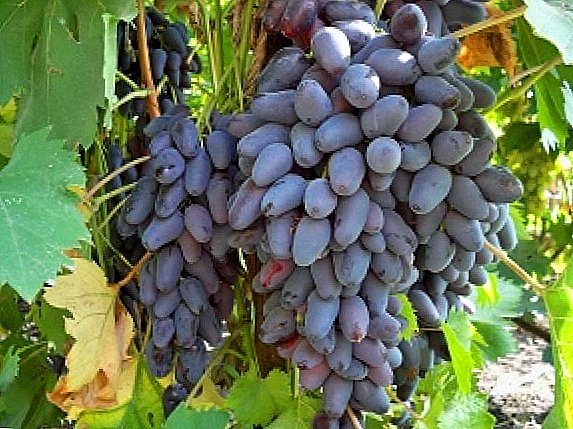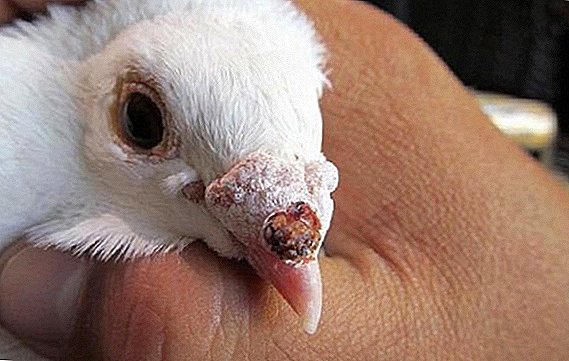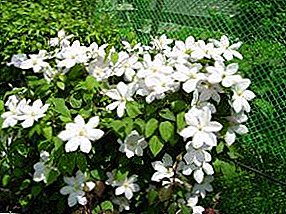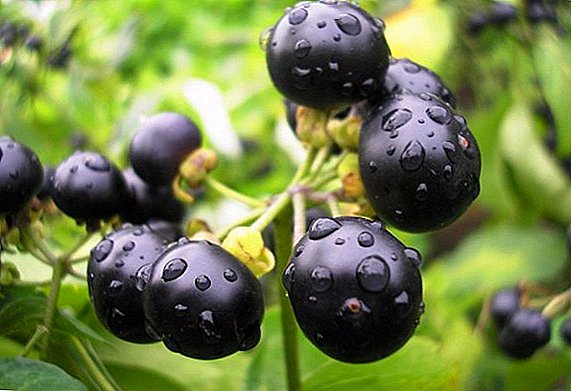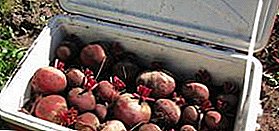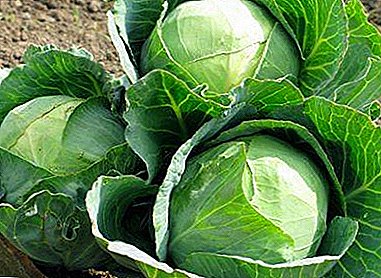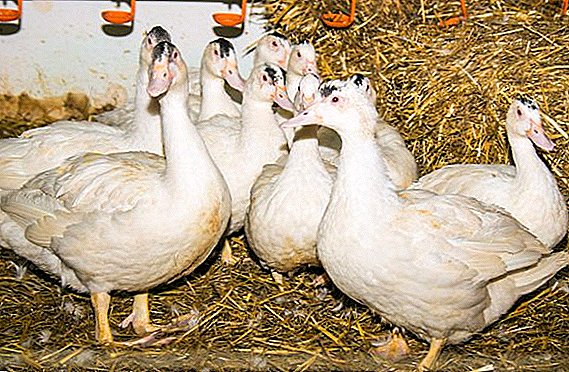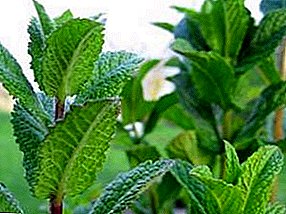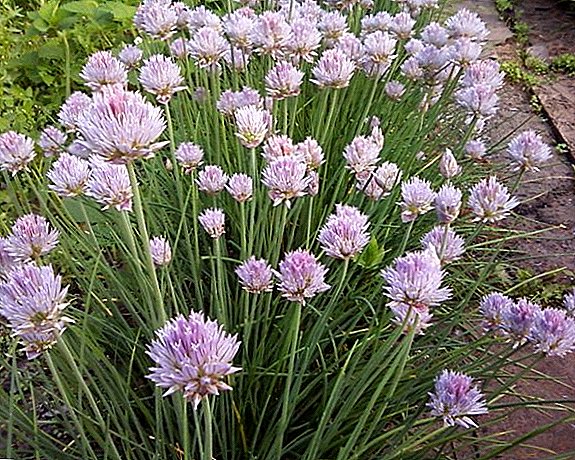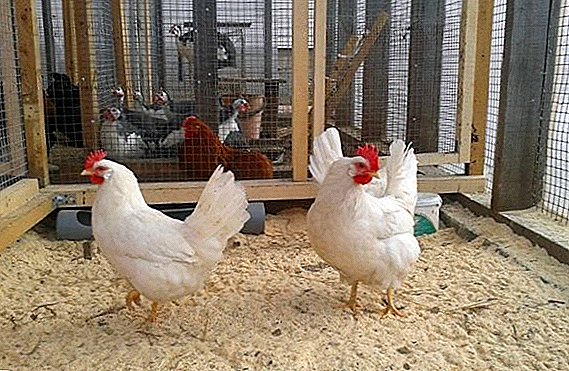 Recently, meat and egg breeds of chickens have been in great demand among farmers, allowing them to receive a double benefit: eggs and wonderful meat. One of the best breeds of poultry meat and egg direction is considered to be the Moscow white, which was specially bred for keeping in the cold Russian climate.
Recently, meat and egg breeds of chickens have been in great demand among farmers, allowing them to receive a double benefit: eggs and wonderful meat. One of the best breeds of poultry meat and egg direction is considered to be the Moscow white, which was specially bred for keeping in the cold Russian climate.
Appearance history
 The story of the emergence of a new breed of chickens began in 1947, when employees of the All-Union Institute of Poultry in Zagorsk first crossed the most successful breeds: White Russian, May Day, Plymouth. Attempts to create a bird with high egg production and good weight continued for quite a long time. Finally in the 80s. their experiments were crowned with success, and the world saw a Moscow white chicken with excellent qualities that are characteristic of birds raised strictly for egg and meat production.
The story of the emergence of a new breed of chickens began in 1947, when employees of the All-Union Institute of Poultry in Zagorsk first crossed the most successful breeds: White Russian, May Day, Plymouth. Attempts to create a bird with high egg production and good weight continued for quite a long time. Finally in the 80s. their experiments were crowned with success, and the world saw a Moscow white chicken with excellent qualities that are characteristic of birds raised strictly for egg and meat production.
Did you know? Today, the hens of this breed - a rarity. There are about 200 heads. Most of them are held by collectors for the purpose of transmitting genetic information.
Description and features of the breed
The Moscow white breed of chickens has a thick white plumage, which protects birds from frost and heat, allowing them to quickly adapt to different climatic conditions.
Appearance and physique
In addition to the characteristic color, this breed has remarkable physique.
- The Moscow white hen is distinguished by beautifully formed and developed pectoral muscles, a broad body, a short neck and small limbs.
- The bird's head is of medium size, with a small reddish pinkish comb and small white-red earlobes.
- Beak and tarsus bright yellow colors.
- Chest convex, posture - proud and noble.
- The legs of the chicken are short, yellow.
- The plumage is white, very dense.

Character
Farmers engaged in growing chickens of this variety, noted their uneasy disposition. Representatives of the young pretty temperamental, active, fearful, but get used to the owner easily. Often they do not obey, run away, fly over the fence. However, with age, their character changes: chickens become more calm and phlegmatic, they rarely scamper through the territory, they almost never make attempts to fly over the fence.
Read also about the breed of hens Moscow black.
A significant advantage of these chickens is their ability to tolerate temperature changeswithout reducing egg production rates. However, for this they should provide a balanced diet and avoid drafts in the hen house.
Birds are prone to pecking eggs, both personal and alien. Therefore, in order to prevent this problem, it is recommended to place a decorative egg out of plaster in each nest, as well as make debing for the bird - trimming a small part of the beak. 
Hatching instinct
Unfortunately, maternal instinct in Moscow hens developed very poorly. Therefore, for their cultivation it is necessary to use incubators or "rent" the hen of another breed.
Chicks hatch fairly quickly, do not require special assistance for hatching. The hatchability rate averages 90%, of which survival is 95%. Small chickens have a bright yellow color and bright character.
Did you know? Scientists crossed the Moscow white cocks with New Hampshire hens. As a result of such experiments, broilers were obtained, whose chickens already weighed over 1.5 kg after three months of hatching.
Productivity
This breed of chickens has quite good productive properties. Birds perfectly adapt to different climatic conditions and continue to rush even in periods of cold or heat. 
Live weight rooster and chicken
Moscow chickens belong to meat-egg category. Adult females can weigh up to 2.7 kg; The live weight of the rooster is slightly larger and amounts to 3-3.5 kg.
Such breeds of chickens as Legbar, Maran, Amrox, Lakenfelder, Velzumer, Bress Gal, Kirghiz Gray, Pushkin, Russian Crested, Black Pantsirevskaya are distinguished by high rates of meat and egg productivity.
Average annual egg production and weight of eggs
Moscow breed chicken starts carry eggs six months after hatching. Eggs are quite large, the weight of one on average reaches 60-62 g. They have a white color, sometimes with a faint cream tint. The egg production of poultry is 200-210 units per year; under the most comfortable conditions of detention, this figure may increase to 230 pieces. In the first year, the chicken is able to carry about 180 eggs.
Diet
Chickens of meat and egg breeds, unlike egg ones, are characterized by a slower metabolism, therefore, to achieve maximum egg production and weight gain, they need to organize a balanced, nutritious diet.
Young
Juveniles are chickens aged from 6 days to 3-4 months. Undoubtedly, the feeding of chicks is different from the food suitable for adult birds.  Food for chickens of the Moscow breed must primarily contain in its composition proteins and carbohydrates that are easily digested.
Food for chickens of the Moscow breed must primarily contain in its composition proteins and carbohydrates that are easily digested.
Important! Young animals can not be fed with fresh (unboiled) milk, because it provokes a disorder of the digestive system and can lead to gluing of feathers.
As food for chickens up to 60 days, mash bags steamed with warm water are perfect.
The basis for such mash can serve:
- corn grain (crushed) - 50%;
- sunflower meal - 10%;
- meat and bone meal - 15%;
- chalk - 1%;
- crushed greens - 5%;
- boiled potatoes (crushed) - 15%;
- fat - 2%;
- yeast - 2%.
To increase the amount of protein in the diet, chicks can be included in the feed of earthworms or moths.  The daily rate of food for chickens will be determined by their age.
The daily rate of food for chickens will be determined by their age.
On average, these figures are (in grams):
- up to 10 days - 20;
- up to 30 days - 55-60;
- up to 60 days - 80-95;
- up to 90 days - 125-130;
- up to 120 days - 140-155.
Freshly hatched chickens should be fed every 2 hours, breaking the food into 3 g portions. After ten days, the feeding frequency is reduced to 4-5 times per day, and starting from the 30th day until the poultry is growing up - to 3-4 times.
Important! In the event that a decrease in egg production is observed in birds, they should increase their daily dose of feed. Adequate feed intake can quickly restore their ability to carry eggs.
Adult herd
Adult chickens are not demanding of food, however, the rate of wet masters should be fairly strictly controlled. At one time, the bird is given so much food that it can eat it for 30-40 minutes. If she has not finished a portion of the portion, the rest of the feed should be removed from the feeder, and when serving the second time, the portion should be slightly reduced.  When organizing a diet, you need to distribute three types of feed by the hour:
When organizing a diet, you need to distribute three types of feed by the hour:
- in the morning (06: 00-07: 00) it is recommended to feed with grain mixtures consisting of corn, wheat and oatmeal;
- at lunch (12: 00-13: 00), wet mashes with the addition of dairy products (cottage cheese, kefir, milk) and bone meal will be suitable as feed;
- for dinner (18: 00-19: 00) it is necessary to give cereals, changing their appearance daily.
When feeding chickens you should not forget to enrich the diet with fresh greens: grass, weed plants, vegetables, and various root vegetables.
Important! In order to increase the fertilization rate of eggs, germinated grain should be added to the ration of cocks, at the rate of 20 mg per kilogram of feed.
Conditions for content
Chickens of the Moscow breed are universal, since they can be excellently grown both in cell conditions and in the walking system. Using walking contents, it is not necessary to erect too high fences, as an adult hen, due to its phlegmatic and one-profile orientation, is unlikely to try to fly over the fence. In the absence of walking, the bird perfectly adapts to closer conditions.  In the house is recommended to maintain warm climate, to protect the room from drafts. To provide heat, you can fill the floor with sand mixed with sunflower seeds husks crushed with dry leaves. In winter, a little hay or straw should be laid on the floor.
In the house is recommended to maintain warm climate, to protect the room from drafts. To provide heat, you can fill the floor with sand mixed with sunflower seeds husks crushed with dry leaves. In winter, a little hay or straw should be laid on the floor.
It is necessary to carefully monitor the cleanliness of the litter, since moisture together with droppings are an excellent medium for the development of pathogenic microorganisms. It is also necessary to control the quality of the water in the drinker and timely replace the fluid. In the feeders it is not recommended to leave wet food, it is better to sprinkle grain on chickens from time to time.
Learn more about the arrangement of the hen house: how to choose a ready-made chicken coop or make and equip yourself: make roosting, nests, feeders and drinkers, heating and ventilation, as well as start the fermentation bedding.
Advantages and disadvantages
Chickens of the Moscow breed have a good reputation for the following reasons:
- unpretentious content, the ability to withstand harsh climatic conditions;
- good fertilization and survival rates of the herd, which eliminates the need to purchase chickens or eggs for incubation;
- high taste parameters - the chicken plucks well, has a yellowish skin, very tasty white meat;
- good egg production - eggs are rather large, with a strong shell, they are distinguished by high nutritional value;
- lack of nutrition - the bird can eat both pasture and special feed, wet and dry masses.
 However, even with the numerous advantages of this breed, it has several flaws:
However, even with the numerous advantages of this breed, it has several flaws:
- lack of maternal instinct; “capital” birds are bad chickens, therefore, an incubator or a new-hen chicken is needed to incubate the eggs;
- relatively small amounts of meat;
- tendency to pecking eggs.
Poultry farmers engaged in the cultivation of white hens of the Moscow breed, note their excellent productivity, remarkable adaptation to climatic conditions, endurance and resilience. Due to such qualities, poultry are perfect for breeding in households, they will be an excellent source of tasty meat and healthy, highly nutritious eggs.


